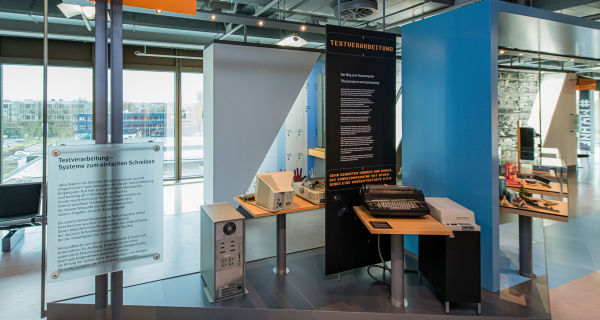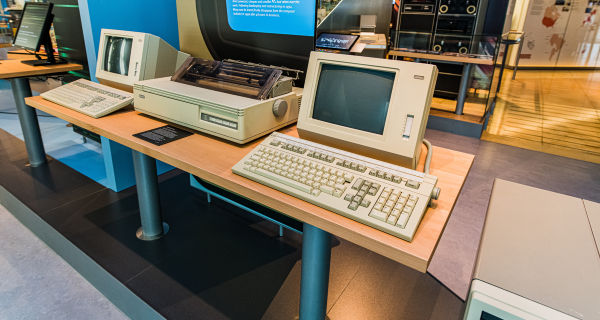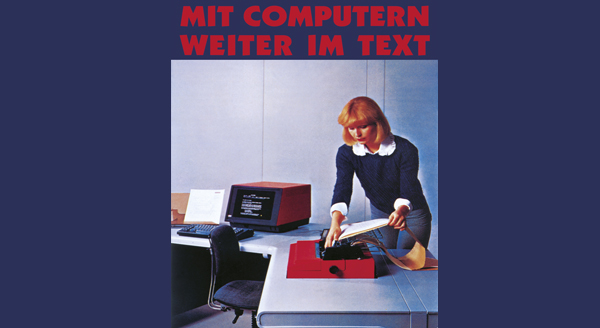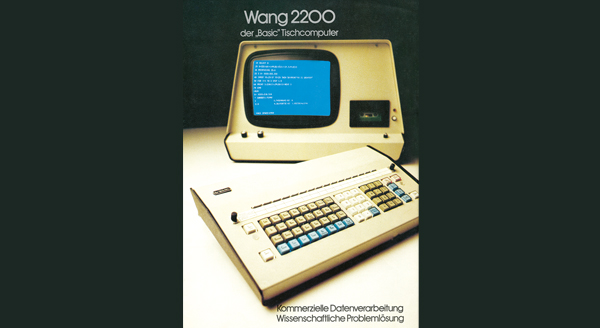The era of word processing machines began in the mid 1960s with memory typewriters. These machines were designed specifically for word processing and rationalized the production of documents, especially in the course of day-to-day business.
Stereotype formulations and texts were input once and stored under a code number. By combining these boilerplate texts and adding brief personal texts, a typist could prepare letters quickly and print them out as often as required.
Nixdorf and Wang
The first typewriter equipped with a magnetic tape storage unit appeared in 1964 and was an input/output device. It enabled typed text to be changed or corrected after typing.
The second route to word processing systems involved computers from the scientific sector. They had screens, allowing users to navigate through texts much better. Later, extra functions such as sorting and calculation were added to these devices. In this way, developers tried to meet the varied requirements of offices. A typical widely used product was the Nixdorf 8840 word processing system, which came on the market in 1979.
The story of the Wang Laboratories Inc. from America is a classic example of the history of word processing. Dr. An Wang, the company founder of Chinese origin, initially enjoyed success with storage components and universal computers. Finally, in the 1970s, he helped word processors to make the breakthrough and made Wang Laboratories one of the most successful computer companies in the USA.
Short-term boom
But Wang and his engineers missed the next stage of development. The first practical personal computers in 1981 heralded the end of dedicated word processors. PCs could handle multiple applications and were far superior to word processors. After tremendous losses, Wang Laboratories had to file for bankruptcy in 1992. The heyday of dedicated word processors was over.
This section of the exhibition shows memory typewriters and screen-based word processors.



